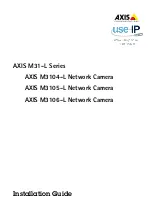
CentreCOM
AT-3624TS/AT-3624TRS
Repeaters
37
10. Align the backplane connector with the interrepeater bus connector on
the back panel of the Slave.
11. Seat the interrepeater bus port of the Slave carefully in the backplane.
Attention
When inserting or removing repeater modules, the power cord should
remain plugged in (using the hot swapping method). To use the hot
swapping method, the module must be disconnected from the backplane
before the power cord is unplugged. If a fault occurs (Fault light stays ON),
disengage the repeater module from the backplane, unplug and replug the
power cord and re-seat the module.
12. Check that the Master downloads management software after the
Slave is seated in the backplane connector. During the download:
❑
All LED ports illuminate
❑
The fault LED illuminates
❑
All port LEDs temporarily go OFF to show that download is
complete
13. Attach the Slave to the rackmount chassis with standard rackmount
screws (not provided).
14. Plug in your data cables to the hub and the network.
15. Check the Link indicators.
If one or more of the ports on the Slave module is transferring data,
the Activity indicator will illuminate.
16. Make sure the empty slot (slot four) is covered with its blank faceplate/
air-dam assembly.
Your AT-3624TRS repeater is now active in the chassis, serving in a
managed hub configuration.
To install blank faceplate/air-dam assembly
Attention
Blank faceplate/air-dam assemblies are necessary to control air flow and
keep the rackmount chassis cool. Chassis are shipped with the faceplate/
air-dam assemblies in place. (Also see Chapter 2, “Hardware Installation”
on page 7.)
1.
Attach a blank faceplate/air-dam assembly to the empty slot.
2.
Align the faceplate/air-dam assembly.
3.
Slide the assembly along the chassis guides until the notch, on the end
of the faceplate/air-dam assembly, connects into the slot at the back of
the chassis.
4.
Screw the faceplate/air-dam assembly in place on each end with one of
the supplied screws.















































